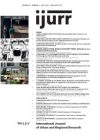Attention to global and world cities has directed the field of urban studies to the significance of international and transnational processes in shaping city economies. This article evaluates these approaches, from a position off their maps. I argue that the circulation of these approaches in academic and policy realms adversely impacts on cities which do not fall into these categories by setting up the idea of the global city as a ‘regulating fiction’, a standard towards which they aspire. It establishes a small sector of the global economy as most desirable in planning the future of cities. By contrast, mega–cities function as the dramatic ‘other’ of world and global cities, and highlight the developmentalist discourse through which most cities in poor countries are assessed as fundamentally lacking in qualities of city–ness. I argue that the long–standing categories of western/third–world cities have been translated into the apparently transnational accounts of global and world cities. Western cities continue to be the primary site of production of apparently unlocated urban theory; so–called third–world cities (and other cities off the map of the world cities cartography) are interpreted through a developmentalist lens and, where they are referred to at all, are framed in terms of ‘difference’ or irrelevance. This article draws attention to the emergence of an alternative set of theoretical approaches, which are more inclusive in their geographical reach and which are concerned with the diverse dynamics of ordinary cities. These approaches have not yet realized that they have the potential to broaden the base for theorizing about cities and, with this in mind, the article explores the potential for a more cosmopolitan urban theory. The policy stakes in this are high, and the article notes that there are important political reasons to promote the analysis of ordinary cities in the face of the persistence of ambitions in many cities to become ‘world cities‘.
Details
Written by:
Jennifer Robinson
Digital Object Identifier (DOI)
10.1111/1468-2427.00397
About DOI
Read full article as PDF
Read full article as HTML
See the references for this article
